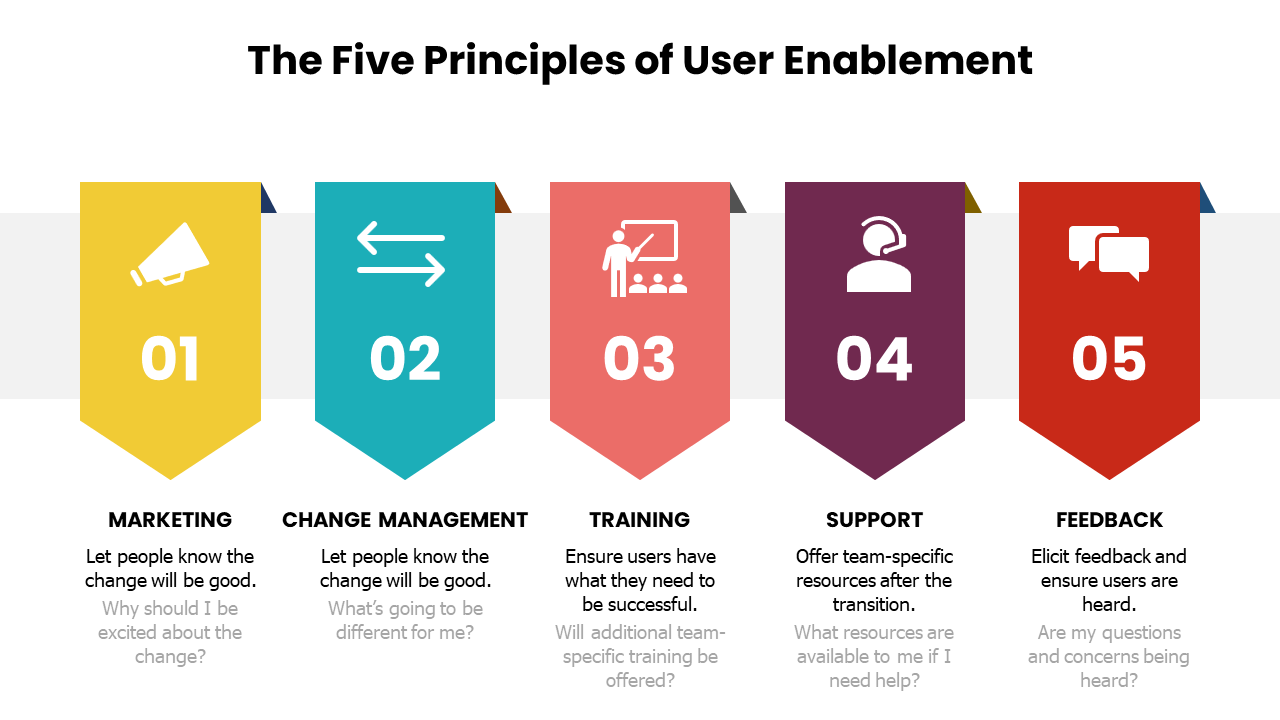User Enablement
Any system is only as good as how well it is used. If it's a CRM, ERP, or any other system, when users don’t know how to use the system effectively the benefits of the new system for your organization will be small, or even negative. This means user enablement is critical to the success of a project.
It is not enough to simply have your new system in place two weeks before your go-live date.

Your users need to know:
Why you’re implementing the new system. When it comes to organizational changes and operational logistics, many employees will be instrumental in the change you’re promoting. It’s important to tend to their needs throughout the change journey.
How existing processes will change and which new processes will be introduced with the new system.
How to use the system. Your user base can range from people who have spent their entire careers on the “green screen” (yet still don’t know how to use a mouse to copy and paste content) to millennials, who are so accustomed to touchscreens that they don’t know that it’s possible to strike the arrow icon on the keyboard to move an object.
Who to contact in case they require support with any problems or questions. If you’re working with an internal service desk, make sure that they’re equipped with standardized scripts. Alternatively, if you’re working with an external service provider, make sure you’ve selected a partner who can provide the highest level of support required for the new system.
Whether they can offer feedback and make suggestions to improve the system. One of the best ways to build support organization-wide is to give everyone a voice and a platform to share their views throughout the transition.
The Role of Content Strategy in Creating Holistic User Enablement
An effective content strategy diagnoses the root causes of your content and process challenges. It provides authoring solutions for adhering to content development guidelines, and as a result, prevents inconsistencies and errors. The goal of a unified content strategy is to identify effective processes, technology and content delivery formats relevant to the user’s needs. Let’s breakdown key components of a unified content strategy and how each one works ensure user enablement:
Content Lifecycle – Proper content strategy development starts with the analysis of the existing content lifecycle from the perspective of the current content engineering and management workflows.
Information architecture (IA) – The information architecture plays an important role within the content strategy. But the IA is not the structure alone. A proper IA also includes the review of the unified classification, taxonomy and tagging conventions applied to ensure the content discoverability. Executing against this properly can positively affect navigation, recommendations and search.
Personalized cross-platform content delivery – This depends on the system’s integration for unified data processing. An analytics engine collects user and behavior data, such as who the users are, where they are in the system contextually, what support tickets they had, and what they did for training. These details inform dynamic delivery of the right information at the right time through the right channel.
Content micronization – Content micronization breaks content into small chunks of information and packages it in an engaging way. This allows the content to be used across all integrated systems. Micronization enables you to make specific recommendations, future-proofing content by updating small snippets.
“Create-once-use-everywhere” approach for content authoring – When implemented correctly, this approach saves time and resources associated with creating content multiple times for different outlets. It streamlines versioning and curation because a single update to a piece of content can be pushed to all channels with changes applied automatically.
Single-source authoring and micronization can be utilized across various “knowledge hub” components and for any content format. However, to make the content more engaging for users and allow for future upskilling, we recommend applying eLearning techniques when designing your content strategy.

